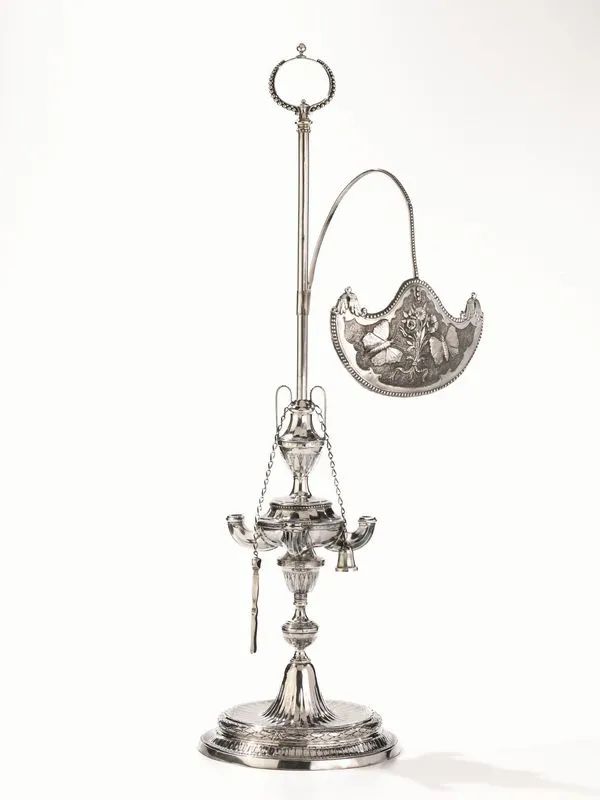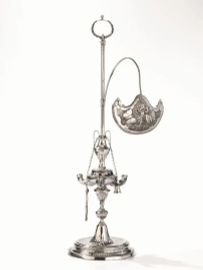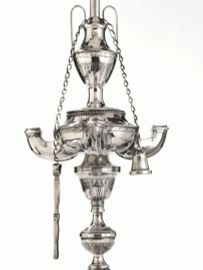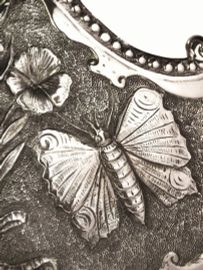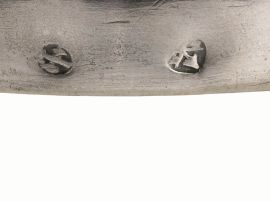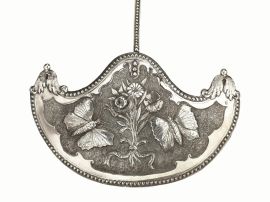LUCERNA, ROMA, FINE SECOLO XVIII, ARGENTIERE ALESSIO COSTANZI
base circolare gradinata con bordo decorato da foglie lanceolate, fusto con coppa porta olio a quattro beccucci, ventola elegantemente sbalzata e cesellata a fiori e farfalle, finale a cerchio perlinato, alt. cm 96, base appesantita
A SILVER OIL LAMP, ROME, END OF THE 18th CENTURY, ALESSIO COSTANZI
on spreading circular foot decorated with lanceolate leaves around the border, the stem with an oil receptacle with four spouts, the shade elegantly embossed and chased with flowers and butterflies, beaded loop handle, 96cm high, weighted base
L'attività di Alessio Costanzi (1765-1822) è testimoniata dal 1762, anno in cui figura come lavorante argentiere presso la bottega del padre Bonaventura Costanzi a Roma.
Nel 1765 ottenne la patente di orefice e tra il 1770 e il 1819 guida tre botteghe in Via del Pellegrino una all'insegna della Fortuna, una all'insegna dell'Aquila ed una all'insegna dell'Ercole.
Il bollo che si trova sulla lucerna, che sembra raffigurare un'aquila gotica, è quello che il maestro usò dal 1765 al 1810. Dal 1811 al 1822 il bollo sarà A96C entro losanga.
Bibliografia di confronto:
C. G. Bulgari, Argentieri, Gemmari e Orafi d'Italia, Roma, 1980, pp. 327-328
The activity of Alessio Costanzi (1765-1822) is documented in 1762, when he appears as a silversmith worker in the workshop of his father, Bonaventura Costanzi, in Rome.
In 1765 he is granted a silversmith’s licence and between 1770 and 1819 he runs three workshops in Via del Pellegrino, the shop signs of which showed respectively the figure of Fortune, the Eagle and Hercules.
The mark on the oil lamp, which resembles a Gothic eagle, is the one used by the silversmith from 1765 to 1810. From 1811 to 1822 the mark will become A96C in a lozenge.
Literature
C.G. Bulgari, Argentieri, Gemmari e Orafi d’Italia, Roma 1980, pp. 327-328

